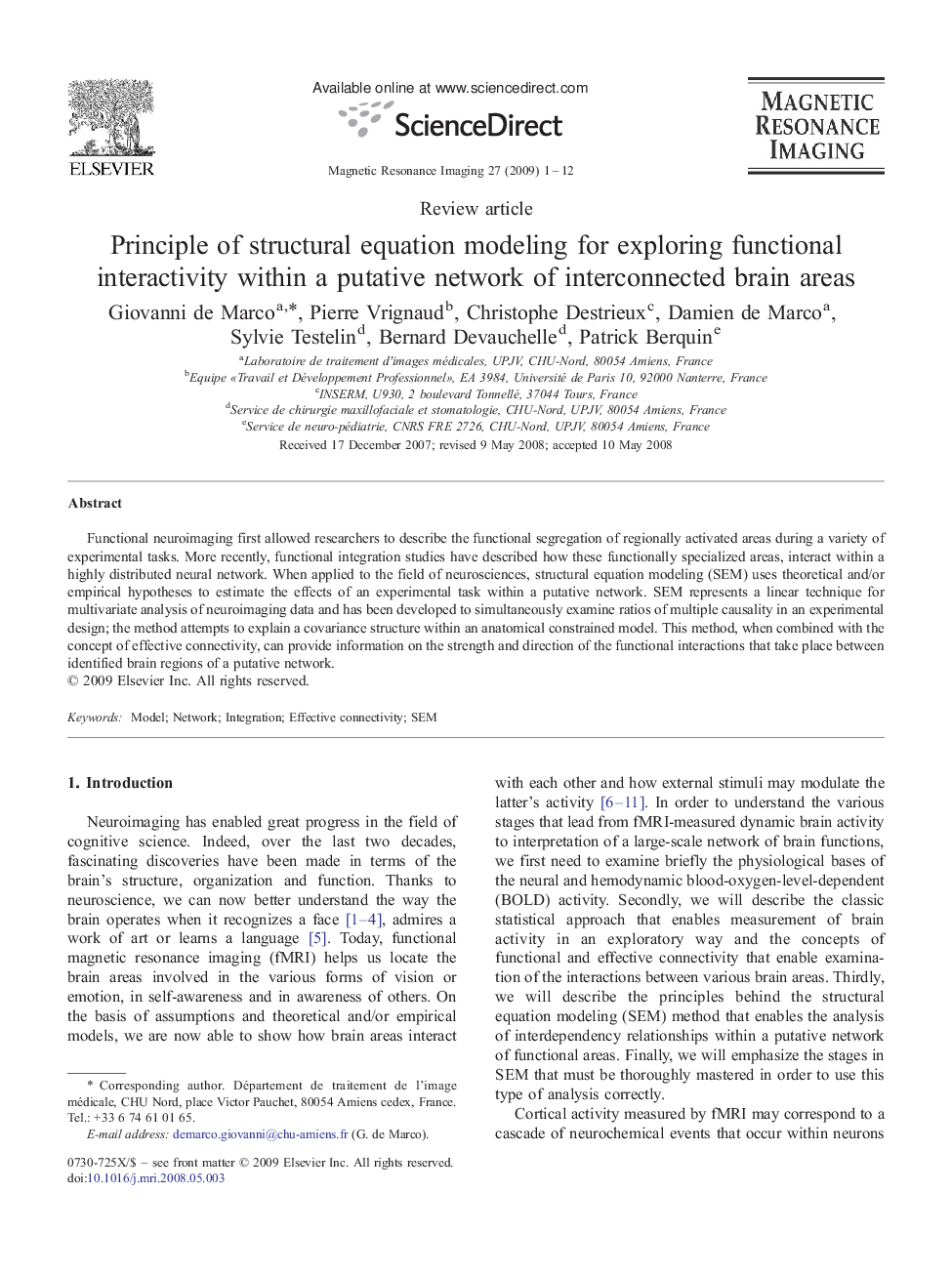| Article ID | Journal | Published Year | Pages | File Type |
|---|---|---|---|---|
| 1807921 | Magnetic Resonance Imaging | 2009 | 12 Pages |
Functional neuroimaging first allowed researchers to describe the functional segregation of regionally activated areas during a variety of experimental tasks. More recently, functional integration studies have described how these functionally specialized areas, interact within a highly distributed neural network. When applied to the field of neurosciences, structural equation modeling (SEM) uses theoretical and/or empirical hypotheses to estimate the effects of an experimental task within a putative network. SEM represents a linear technique for multivariate analysis of neuroimaging data and has been developed to simultaneously examine ratios of multiple causality in an experimental design; the method attempts to explain a covariance structure within an anatomical constrained model. This method, when combined with the concept of effective connectivity, can provide information on the strength and direction of the functional interactions that take place between identified brain regions of a putative network.
